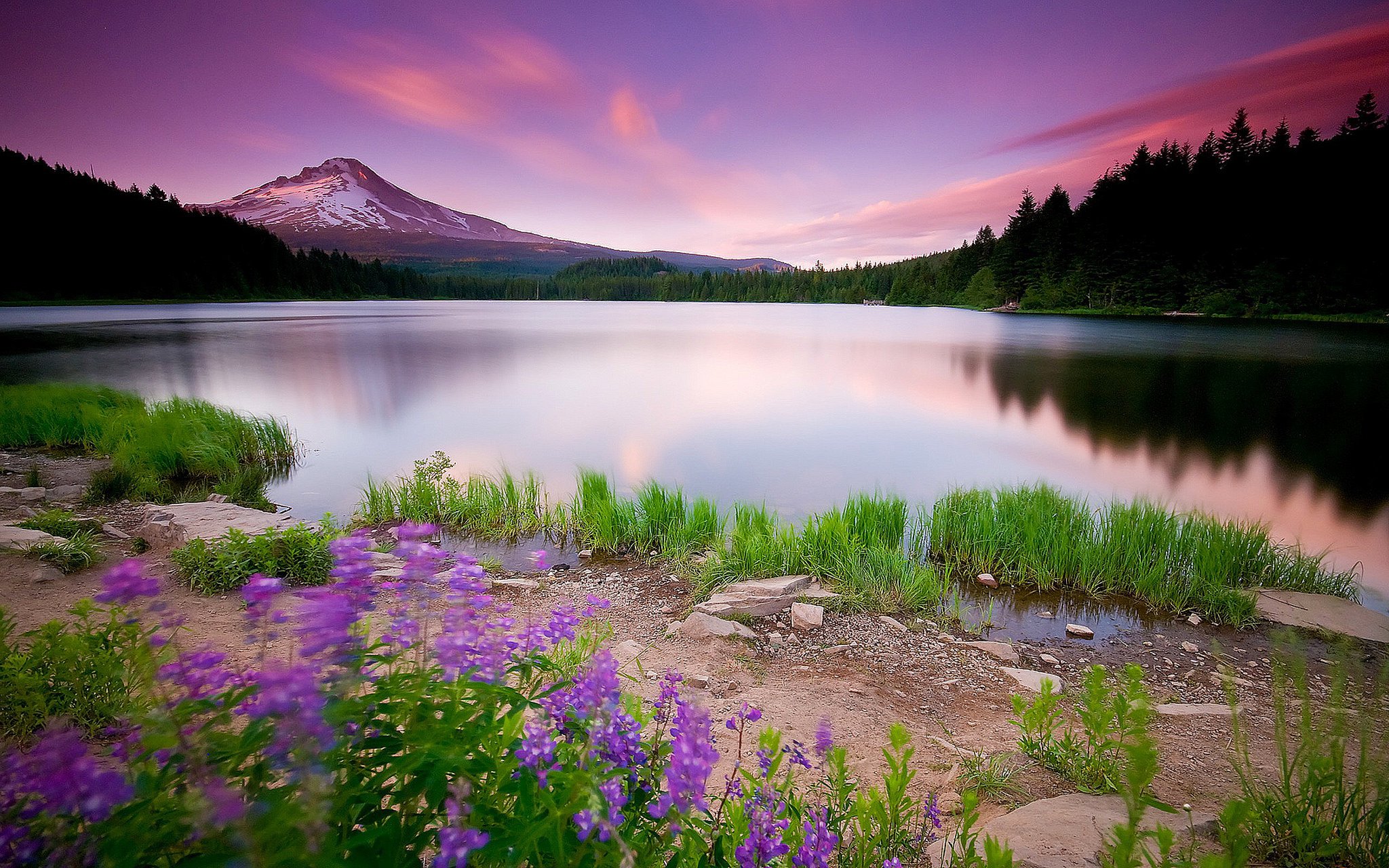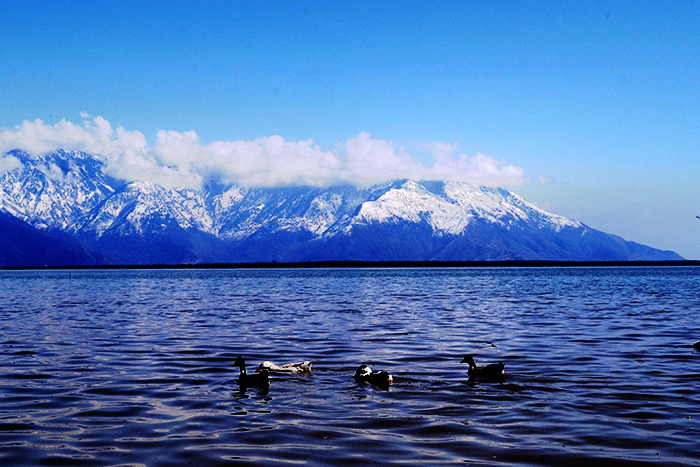

Wular Lake (also spelt Wullar) is one of the largest fresh water lakes in Asia. It is sited in Bandipora district of Jammu and Kashmir. The majestic lake has a breathtaking view and attracts a huge number of visitors around the year. The lake basin was formed as a result of tectonic activity and is fed by the Jhelum River. The lake's size varies seasonally from 12 to 100 square miles (30 to 260 square kilometers). In addition, much of the lake has been drained as a result of willow plantations being built on the shore in the 1950s. The lake, calm in its appearance, is known for the fierce winds that sometimes blow heavy currents all through its way. However, when the waters are serene and collected, this destination plays host to a number of events such as boating, water sports and water ski.
A favorite picnic spot among locals and tourists alike, Wular Lake is replenished by the water of the mighty Jhelum River and is one of the 26 wetlands of India. This attraction is the perfect place to sit back and revel in the beauty of nature away from the hustle and bustle of city life. The beautiful landscape of the lake is one of the major for garnering huge amount tourists. A walk around the lake is very peaceful and uplifting, and when you've had enough of walking you can explore the place by hopping on a boat and peddle your way through the waters.
The beauty of Wullar Lake is beyond description of words. Devoid of any artificial feature, the Wullar Lake in Kashmir reflects the beauty of nature at its best. Set amongst scenic locals, the Wular Lake is also home to an exotic and wide variety of avian life. Other attractions of the Wullar Lake are some ruins, standing in the middle of the lake. These remains are that of an island of Zaina Lanka, built by King Zain-ul-Abidin. It is believed that the lake is a remnant of the Satisar Lake, which used to be here in the pre-historic times. The tour of Wullar Lake generally includes the neighboring town of Bandipora. This town is quite famous as a shopping destination for the purchase of woollen carpets manufactured in this area. Another must see place near Wullar is the Nal Sarovar Bird Sanctuary, bird watcher's paradise.
Spread over an area of 189 sq. km, maximum depth of 14 metres,length of 16 km and a breadth of 10 km, the lake is surrounded by mountains and dense forests. It is an important habitat for fish, accounting for 60 per cent of the total fish production within the state. Zaina Lank an island in the lake was built by Sultan Zain-ul-Abidin in 1443, it is said to have been built as a storm refuge for boatmen in the lake. Legend describes Wular as a ‘cave’ where a city was once swallowed up by the earthquakes and floods. Wular is a mystic lake that still finds same takers who are interested to see its vastness and its surroundings. The water nuts grow in a large quantity in some portions of lake, this provides a living to many and a nut to relish for others.
Wular Lake is an important fish habitat, the main species being the common carp (Cyprinus carpio), rosy barb (Barbus conchonius), mosquitofish (Gambusia affinis), Nemacheilus species, Crossocheilus latius, and various snowtrout species in the genera Schizopyge and Schizothorax. Snowtrout species identified in the lake include the Sattar snowtrout (Schizopyge curvifrons), Chirruh snowtrout (Schizopyge esocinus), Schizothorax planifrons, Schizothorax macropogon, Schizothorax longipinus and Chush snowtrout (Schizopyge niger).
Fish from Wular Lake make up a significant part of the diet for many thousands of people living on its shores and elsewhere in the Kashmir Valley. More than eight thousand fishermen earn their livelihood from the lake, primarily fishing for the endemic Schizothorax species and the non-native carp. Their catch comprises about 60 percent of the total yield of fish in Kashmir. Hundreds of other local villagers are employed by cooperative societies that trade the fish catch. Many other families harvest plants such as the grass Phragmites and the waterlily-like Nymphoides from the lake for animal fodder.
The lake sustains a rich population of birds. Terrestrial birds observed around the lake include the black-eared kite, Eurasian sparrow hawk, short-toed eagle, Himalayan golden eagle, Himalayan monal, chukar partridge, koklass pheasant, rockdove, common cuckoo, alpine swift, Indian roller, Himalayan woodpecker, hoopoe, barn swallow, golden oriole and others.
The lake is one of the 26 Indian wetlands designated as a Ramsar site. However it faces environmental threats including the conversion of large parts of the lake's catchment areas into agriculture land, pollution from fertilizers and animal wastes, hunting of waterfowl and migratory birds, and weed infestation in the lake itself.